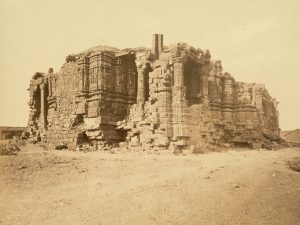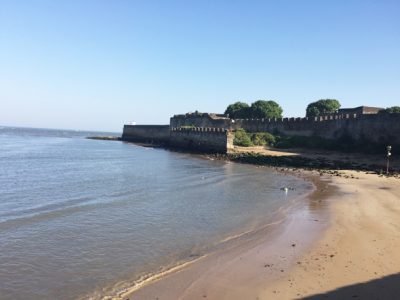Sightseeing in India Off the Beaten Path Somnath-Porbandar-Diu and Gir National Forest
Saved under Community, Current Stories, Travel
Tags: Baytown, Clear Lake, Cypress, Desi news, Diu, Gir National Forest, Greater Houston, Houston, Houston Desi news, India, Indian American community, Indian News, Indians in America, Indo-American News, Katy, NRI, pearland, Porbandar, Somnath, south asia, South India, Sugar Land, Texas, USA
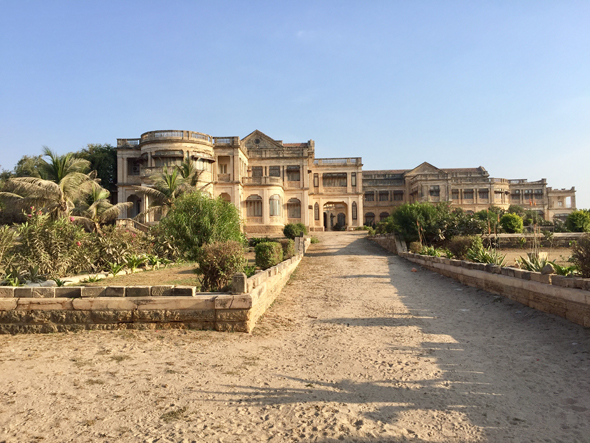
An unexpected discovery was the Huzoor Palace on the beach in Porbander. The palace appears abandoned, but you could imagine the type of lavish living Rana Narwarsinghji and his descendants held here. Imagine a Downton Abbey of India!
By Pramod Kulkarni
On the Road: This is the second episode describing my wife Jyoti and I’s visit to India during Dec.-January 2016. As outlined in the first episode, we undertook a 9-day trip to Gujarat.
Our Gujarat saga began with a flight from Mumbai to Ahmedabad. Our tour driver met us at the airport and journeyed with us until our flight from Vadodara back to Mumbai nine days later.
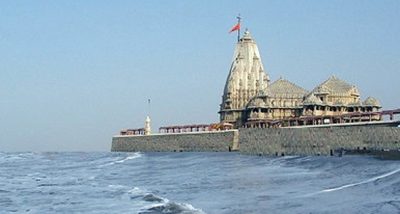
The first temple at Somnath was a wooden structure built as early as 500 AD. Muslim invaders destroyed the temple multiple times. The inset photo shows the dilapidated temple in 1869. The temple shown here was reconstructed in 1951 under the direction of Sardar Vallabhai Patel.
The previous episode provided a cursory view of our entire Gujarat trip. This episode picks up at Somnath. The temple is situated at the edge of the Arabian Sea near the confluence of three rivers— Kapila, Hiran and the mythical Sarasvati.
Our next stop was Porbander, the ancestral home of Mahatma Gandhi. A memorial built at the site is called Kirti Mandir.
The house and room where Gandhiji was born is preserved and includes a photo exhibit of the life and times of the Father of India.
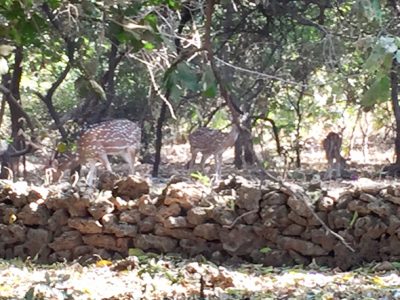
Gir National Forest is a protected area for lions, deer, neelgai and peacocks. The lion population has increased to 522, but they are to be seen in only early morning or evening when they come to drink out of the streams and brooks.
A most interesting discovery at Porbandar was the Huzoor Palace built by Rana Natwarsinhji, who was the last Maharaja of the Princely State of Porbandar, in the early years of the 20th century, with clear European influences. Descendants of the Rana now live in London and the palace is desolate and appears to be abandoned.
The journey from Porbandar to the island of Diu was through dry, desolate land hugging the Arabian Sea. We passed rows of windmills that took advantage of the stiff coastal winds to generate electricity.
Diu is one of the three islands that were reclaimed from the Portugese in 1961. In 1535, Bahadur Shah, the Sultan of Gujarat, allowed the Portuguese to construct the Diu Fort and maintain a garrison on the island. Diu is now a beach resort that attracts tourists from Gujarat for its wine shops and bars. Diu is one of the few “wet” areas in the dry Gujarat state.
Next stop on our trip was the Gir National Forest. This is the sole sanctuary for the Asiatic lion. The Nawab of Junagadh hunted liona, but when their population dwindled, he declared the forest as a sanctuary as long back as 1900. The 2015 Asiatic Lion Census lists the lion population at Gir as having grown to 523 (up 23% from the 2010 Census).
The Gujarat Forests & Environment Department conducts safaris through the forest daily in the mornings and evenings.
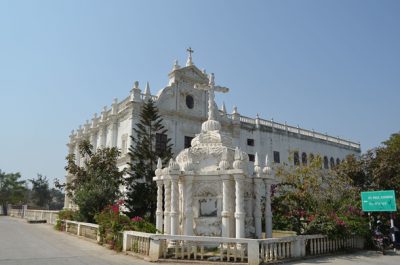
St. Paul’s Church in Diu is known for its traditional baroque architecture in white stucco. The altar, which has the image of St. Mary, is carved out of a single piece of Burmese teak and can be lit up with up to 101 candles.
You have to, however, register at their online site at least two days in advance. We couldn’t get on the government safari, but managed to go on a private tour to see deer, peacocks and neelgai (blue bull), but were not lucky enough to see any lions.
The next episode of this travelogue will cover sights in Junagadh and Vadodara, then reports from Pune, Konkan coast and Hyderabad.

